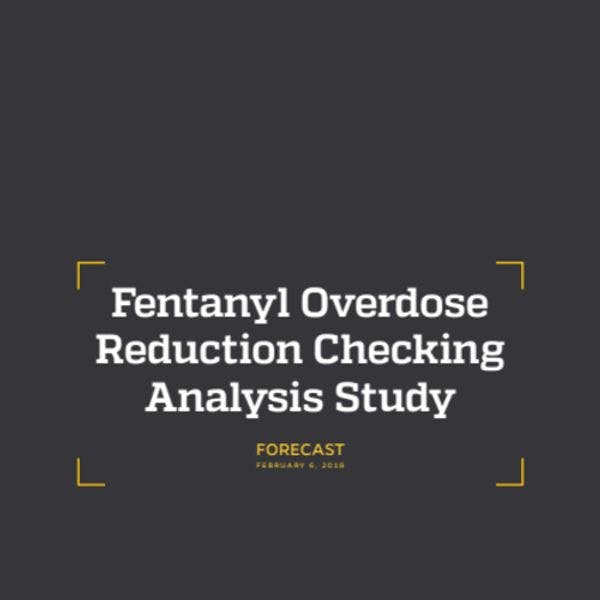Etude sur la réduction des overdoses au fentanyl et les analyses de vérification des drogues
L’étude FORECAST menée par la John Hopkins Bloomberg School of Public Health recommande de soutenir la vérification des drogues comme approche de santé publique pour faire face à la crise du Fentanyl. Pour en savoir plus, en Anglais, veuillez lire les informations ci-dessous.
Life expectancy in the United States has declined for two years in a row, largely driven by the opioid epidemic. Overdoses claimed more than 64,000 lives in 2016 and all indications are that the impact of the crisis in 2017 will be even greater. Fentanyl, a synthetic opioid that is 50 to 100 times more potent than morphine, is the primary cause of the rapid increase in overdose deaths. Fentanyl and its associated analogues (including carfentanyl, furanyl fentanyl, and acetyl fentanyl) have been found mixed with heroin, cocaine and pressed into counterfeit prescription drugs. In 2015, the Drug Enforcement Agency issued a nationwide alert calling fentanyl a “threat to health and public safety.” Recently, the Centers for Disease Control and Prevention reported that fentanyl and associated analogues were associated with over half of the opioid overdoses in ten states during the second half of 2016.
The potential of death from even small amounts of fentanyl has changed the landscape of opioid use in the United States. Evidence to date suggests that people who use drugs often do not know whether fentanyl is present in what they are about to consume. A recent study among 242 heroin users across 17 sites in British Columbia, Canada, found that 29% tested positive for fentanyl, 73% of whom did not report knowingly using fentanyl.
To explore the viability of a public health response to the fentanyl crisis, the Bloomberg American Health Initiative awarded funding to support the Fentanyl Overdose Reduction Checking Analysis Study (FORECAST). This study aimed to examine the accuracy of three technologies in identifying the presence of fentanyl in samples of illicit drugs. It also aimed to gauge whether people who use drugs and other stakeholders would be interested in using such technology as part of harm reduction programs.
